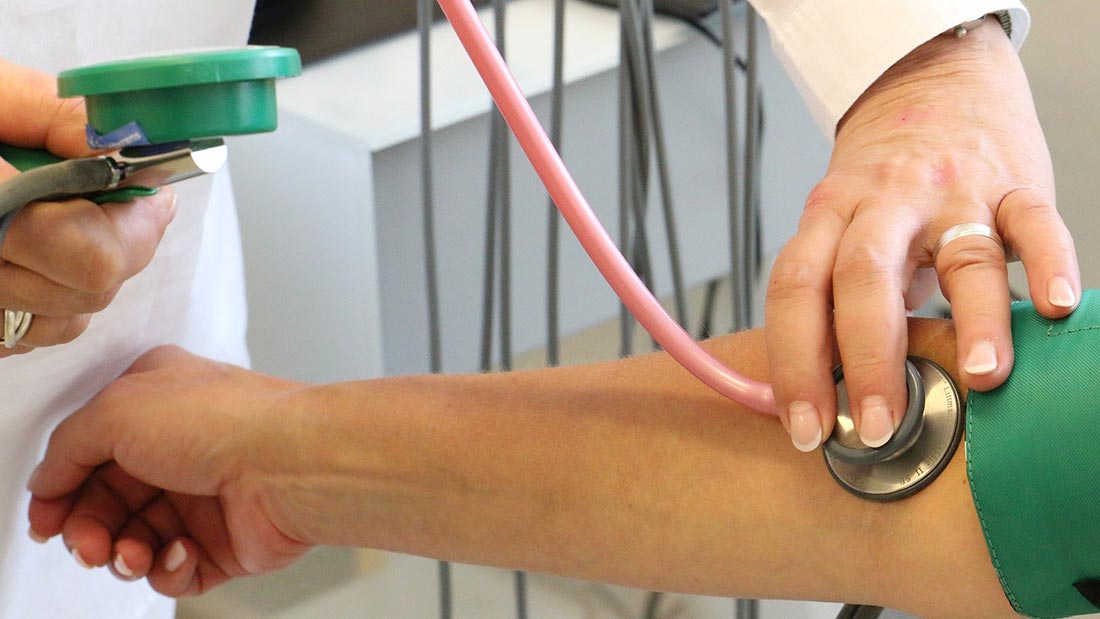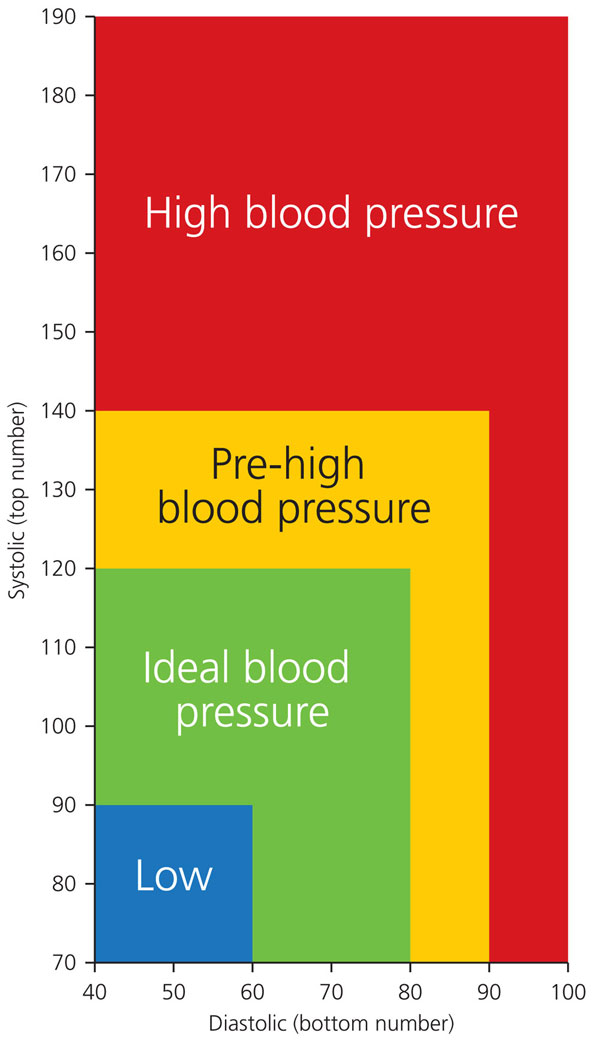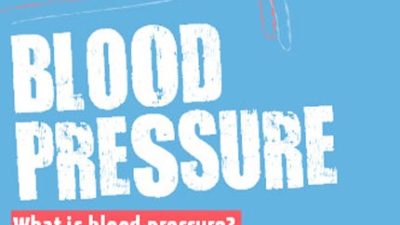What do my numbers mean? Blood pressure readings explained

Blood pressure describes the pressure in the main blood vessel in your arm, which stems from the heart.

What is blood pressure?
Every time your heart beats, it pushes blood through the blood vessels in your body to provide your cells with oxygen and nutrients. Blood pressure measures the force that your blood pushes against the blood vessels.
Blood pressure is measured both when the heart is actually beating (systolic blood pressure – the top number) and between beats (the resting rate, or diastolic blood pressure – the bottom number). It is given as two figures, eg 120/80.
How is it measured?
A device called a sphygmomanometer is used. An inflatable cuff is wrapped around your upper arm. When inflated the cuff stops the blood flow in the main blood vessel in your arm. The nurse then watches a gauge in the sphygmomanometer and listens through a stethoscope as the air in the cuff is released. When the first sound of the heartbeat is heard, the systolic pressure is recorded. When the sound disappears, the diastolic pressure is recorded. Sometimes a computerised blood pressure machine is used to take the readings automatically.
What is a healthy blood pressure?
A healthy blood pressure is in the range 90/60 to 120/80. Blood pressure varies throughout the day and your levels of physical exertion and stress cause it to change, too. So blood pressure should be checked under resting conditions. Single measurements aren’t particularly meaningful. A diagnosis of high blood pressure (hypertension) isn’t normally made unless a high reading is measured on three separate occasions – usually over three months.
Why is it important?
Blood pressure is an indicator of general health, and it’s important to be within a healthy range. High blood pressure means your heart is overworking which can put a strain on your circulatory system. Low blood pressure can cause dizziness, confusion or fainting.
High blood pressure increases your risk of heart disease, heart attacks, strokes and kidney disease – the higher the pressure the greater the risk. Around one in three men and women in the UK have high blood pressure.
How can I maintain a healthy blood pressure?
Most cases of high blood pressure are reversible through making some healthy lifestyle changes.
Blood pressure typically rises as we get older, but some people manage to avoid this. Regular exercise, maintaining a healthy weight, a low fat (especially saturated animal fat) and low salt diet, quitting smoking and reducing the amount of alcohol consumed will help.
Why vegan is best
Vegan diets are lower in saturated fat and contain no cholesterol, but contain more fibre, phytosterols and anti-oxidants which contribute to good health. The consumption of meat, including white meat and fish, is continuously associated with high blood pressure, blood cholesterol and other cardiovascular risk factors. Studies have shown that adopting a vegan diet can lower markers of cardiovascular disease including high blood pressure within just seven days.
A study of over 11,000 British men and women has shown that vegans are significantly less likely to have high blood pressure than vegetarians and meat-eaters, and are more likely to have a BMI within the healthy range.
Another study has shown that after one year of adhering to a vegan diet, 76 per cent of patients with high blood pressure were able to either drastically reduce or completely discontinue their medications.
Many other studies have shown vegans to have considerably lower blood pressure than meat eaters – it is also the finding of the World Health Organisation and the American Dietetic Association.
For more information see our Have a Heart guide.








